The Upstairs-Downstairs Connection: Picking the Right Stair Treatment
http://decor-ideas.org 11/07/2014 04:12 Decor Ideas
If your home has multiple levels, chances are, you have a few different floor treatments as well. If you have the same flooring on both levels, or if your stairs were already covered when you moved in, you may not have given the matter much thought — but what goes on those stairs can impact how your home flows from one space to the next, and deciding what that treatment should be is not always straightforward. For instance: If you want to have something soft on the stairs, but both levels of your home have hard flooring, can you still carpet the stairs? And what if the upstairs is carpeted, but you don’t want a carpeted stairway? Read on for solutions to these and other common scenarios.
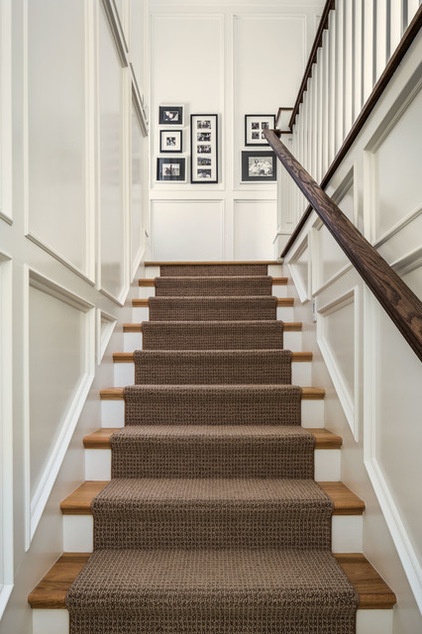
Hard Flooring Upstairs and Downstairs
Solution: Use a runner. With hard flooring throughout the home, fully carpeted stairs can look a bit out of place. To add softness and reduce wear on your stairs, try a runner instead. A runner leaves some of the hard flooring exposed, which helps create a visual connection between upstairs and down.
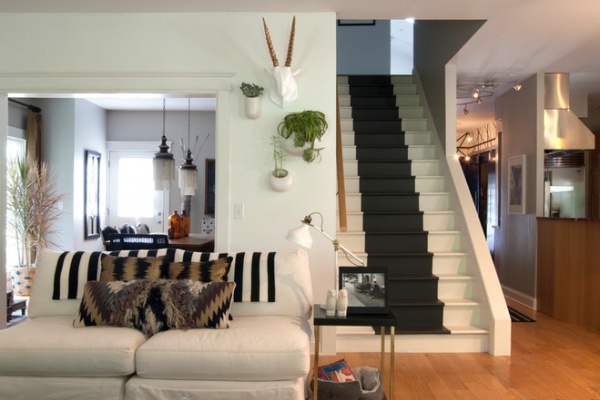
Solution: Paint a runner. If you like the look of a runner but want to keep all of the flooring consistent, a painted-on runner might be just the thing. Make it as simple or as bold as you want — you can always change your mind and repaint it.
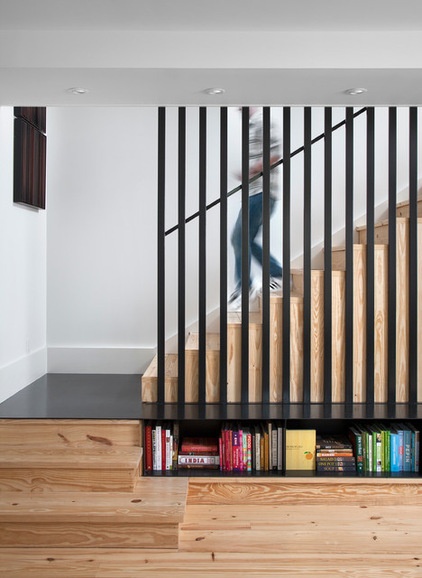
Solution: Leave the stairs bare. A simple option when you have wood floors both upstairs and down is to leave the stairs bare, with a finish that matches the flooring in the rest of your space. However, if your stairs are not in the best shape (and sometimes you may not find that out until you’ve ripped out the old carpeting), it can be more economical to re-cover them — or paint them.
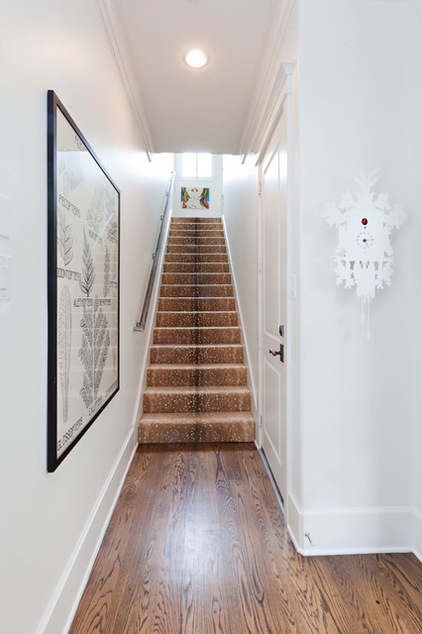
If your heart is set on fully carpeted stairs … This look can work, but know that it’s trickier to pull off. With hard flooring upstairs and downstairs, what you want to avoid is that forgotten-carpeting look, as if a work crew just forgot to rip out the stairway carpet. Carpeting in a bold color or pattern for the stairs looks more intentional than bland beige. And carpeting tends to look more natural in a narrow stairwell, like the one shown here, rather than on wide stairs in an open foyer. If you can, choose a pattern with at least one color that matches the tone of the flooring in the rest of the house, for consistency.
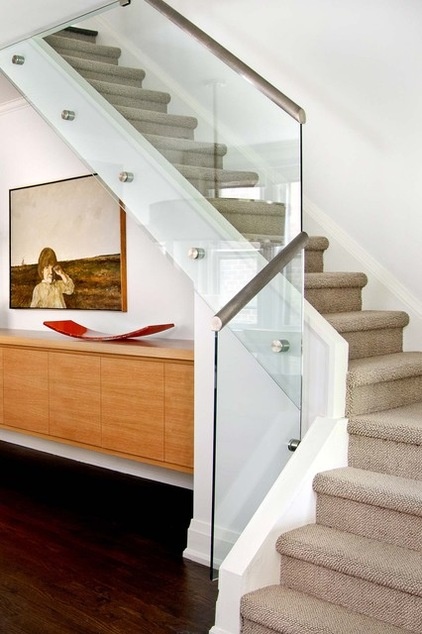
Carpeting Upstairs, Hard Flooring Downstairs
Solution: Carpet the stairs to match. This is the most common stair treatment when the upstairs floor is carpeted — the cushy carpeted stairway is a visual link to the next floor and gives a hint that the upstairs space is for bedrooms.
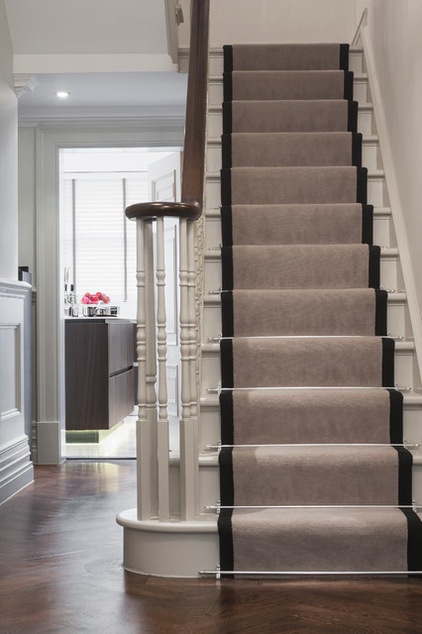
Solution: Choose a runner with contrasting trim. For a classic look that lets some of the wood beneath show through, pick out a runner that matches your upstairs carpet, but with contrasting trim. The trim makes the runner look crisp and neat, sweeping the eye upward.
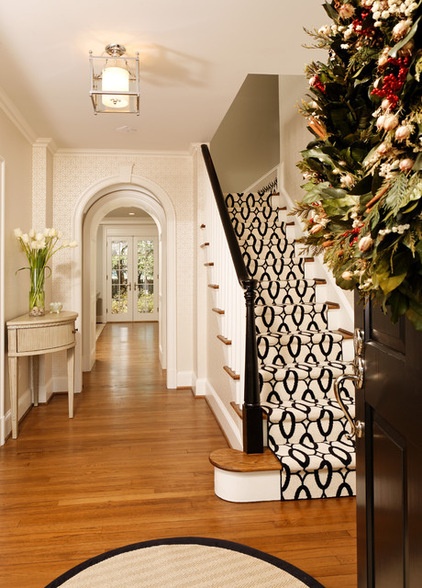
Solution: Choose a fun runner. If you want to do a different carpet on the stairs from the one you’re using on the upper floor, use a runner rather than wall-to-wall. Even though it’s just a bit of hard flooring showing around the edges, when you’re using a really bold pattern (like the one shown here), it makes all the difference.
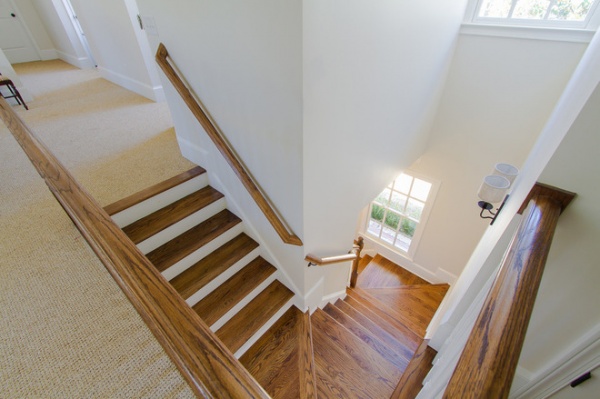
Solution: Leave the stairs bare. Just because the upstairs floor has carpeting does not mean you must carpet the stairs, too. Hard flooring that matches the floors on the lower level looks just as appropriate as carpeting — and requires less upkeep.
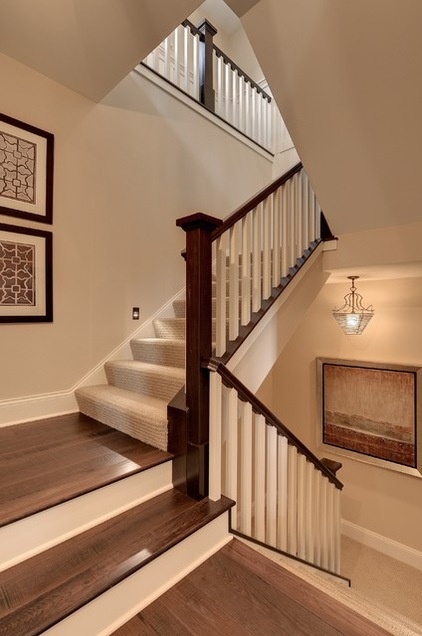
Solution: Make a change at the landing. If your stairs have a switchback, this can be a good place to make a change in floor covering. If you have a carpeted upstairs, you could have the upper portion of the stairs carpeted as well and then switch to hard flooring at the landing and below.
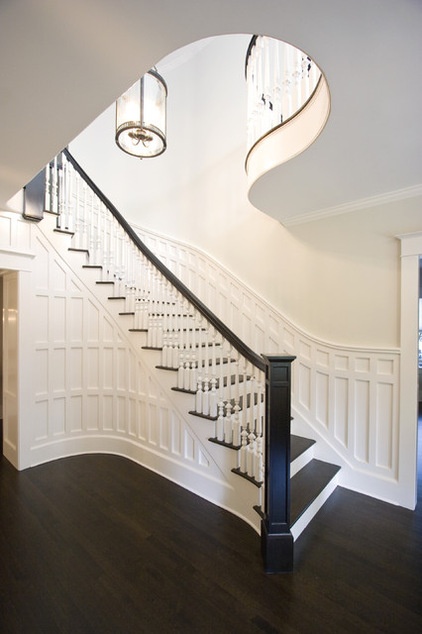
No Matter What: Consider the View From Below
Often the clearest view of a staircase is from the base of the stairs, not from the top — so keep that in mind when choosing a treatment for your stairs. Whether you decide to go with carpeting, a runner or hard flooring, make sure it complements the flooring on the lower level.
More:
How to Get Your Stair Runners Right
Key Measurements for a Heavenly Stairway
Tell us: Do you have carpeting, a runner or hard flooring on your stairs?
Related Articles Recommended












